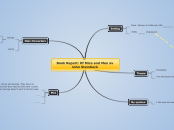Great Depression
Political
The Federal Reserves increased interests
The government did not let open market operations from keeping the money supply from falling
At the time of the beginning of the great depression, the president of the united states was Herbert Hoover, Who stayed in power throughout the great depression leading all the way into the beginning of World War II when Franklin D. Roosevelt took power
Post World War I, Britain and France loaned money from american banks for restorations.
U.S. banks began to fail
U.S banks began to pressure the European countries for their money back
This pressure contributed to the global economic breakdown during the great depression
War debts and high tariffs caused from the world war 1
This minimized global trade (imports and Exports)
Social
When people began to sell shares and stock prices began to drop, people went into a panic and sold everything that they had
This also caused banks to run out of money which required banks to take out loans or go out of business
This caused the stock prices to crash
The peak of the depression was in 1933 when 25% of the americans work force (12,830,000 people) were all unemployed
Black Thursday, October 24th, 1929, was the day 16 million stocks were sold by investors who has panicked and lost faith in the american economy
Main topic
Economic
A Five-year bull market had finished and peaked on 1929
investors began to sell (hitting a record of 12.8 million shares sold) which then caused panicking selling. then a few days later 16.4 million more shares were sold (a 12% Dow lost)
The US had already spent $32 billion in World War I
This was a $30 billion loss
Wages in 1929-1933 fell roughly 43%, and farm prices fell which caused many farmers to lose their jobs
Farmers began to face low prices and large debts
Caused Farmers to lose jobs and reduced Agriculture
The "Fed" raised interest rates
A large sum of people began to make more money than they were making at the time
In 1920's the wealth was unevenly spread
The less fortunate lost jobs and couldn't afford to live









